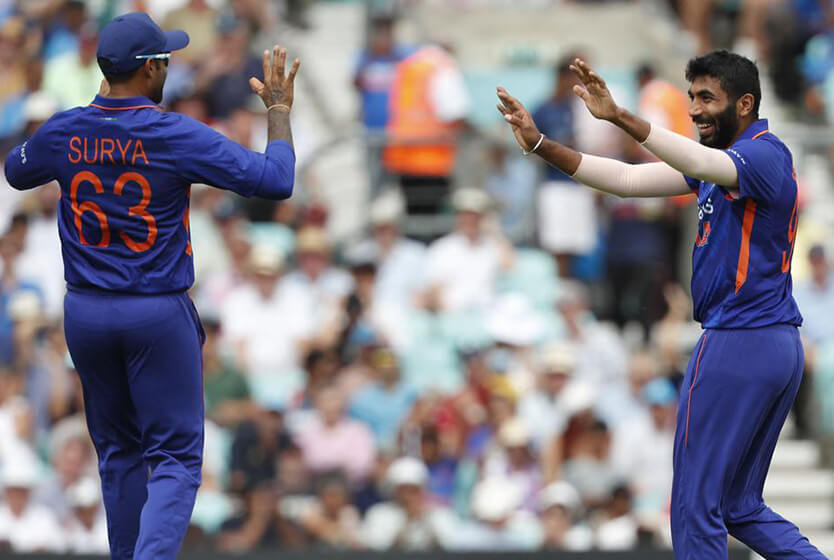
Cricket’s Cutting-Edge Metrics: Analyzing the 2024 Men’s T20 World Cup with RAAR and RBAR
In the dynamic world of cricket, where every run matters, statistical analysis has become an indispensable tool for dissecting player performance. One such metric that has gained prominence in recent years is “Runs Above Average Replacement” (RAAR). RAAR serves as a comprehensive measure of a batter’s impact as compared to what the average batter would do, providing insights into their ability to outperform expected run rates in different match situations, keeping in mind the context of the match.
Batting
Defining RAAR
RAAR quantifies the difference between a batter’s actual runs scored and the runs they were expected to score based on historical data, context of the match, and match-specific variables. It essentially evaluates how much value a player adds to their team’s total run tally beyond what an average replacement player would contribute in similar circumstances. So, the metric which is the primary one here is Expected Runs.
The Expected Runs
The Expected Runs are derived for each nth ball in the match through a detailed analysis of historical data from the past nine years’ ball-by-ball records (approximately more than 1.6 Million Deliveries and their context were taken into account to build this model), factoring in three critical variables: the current run rate before that nth ball, the remaining legal balls before that nth ball, and the number of wickets fallen before that nth ball was bowled. Then, through a historical review of the data with each combination of innings run rate, innings balls left, and wickets down, we took the average of the runs scored. So, with each unique combination, the data of the previous 9 years was processed, and for each unique combination of these three variables, the bat runs that were scored were taken as naive averages to calculate the expected runs on the nth ball. And that is how we were able to predict the Expected Runs before even the ball was bowled. By considering these variables, the expected runs reflect the average performance in comparable match situations, providing a benchmark against which batters can be evaluated.
RAAR
Now it’s evident enough that RAAR (Runs Above Average Replacement) is nothing but the difference between the actual runs that the batter was able to score on a specific ball and Expected Runs that were predicted before that specific ball, taking into account the context and historical data.
Deconstructing the Data
The dataset presented showcases the RAAR values of almost all the batters (All batters from top-ranked sides and a few from the associate nations) participating in the 2024 T20 World Cup in the West Indies & the USA. Again, for context, these values are calculated based on a sophisticated algorithm that considers three key variables: innings run rate before a specific ball (n), innings legal balls remaining before that ball, and innings wickets fallen. By analyzing these variables over the past two years (2023-2024), the expected runs for each unique combination were determined, providing a baseline for comparison with the actual runs scored by the batters.
Actual vs. Expected Runs
A closer look at the data reveals fascinating insights into individual batter performances. For instance, Heinrich Klaasen tops the list with 1961 actual runs, outperforming his expected runs by 243. This suggests that Klaasen consistently exceeded expectations, making significant contributions to his team’s total score. Suryakumar Yadav is another player whose ranking as the Number 1 T20 batter is justified on its own; he has 219 runs more than an average batter on the balls he has faced since January 1, 2023. Such impact players Klaasen and SKY are.
Azam Khan from Pakistan is not a surprise entry. Its evident from his batting style as well. Whatever runs he scores, he scores with impact. He is in 3rd place among all these impact batters since January 1, 2023, scoring 191 Runs Above Average Replacement. After him, Glenn Maxwell, Nicholas Pooran, Will Jacks, Andre Russell, Daryl Mitchell, Finn Allen, and Tristan Stubbs are amongst the impact batters in the last one and half years who have Runs Above Average Replacement as more than 100 (186, 178, 177, 107, 104, 104 and 100).
Will Jacks will be an interesting player to watch this month. He has been in sublime form for the last two years, and England will look to benefit from it. Finn Allen will be a guy to watch out for as well. Tristan Stubbs down the order with Heinrich Klaasen for South Africa will make for a destructive middle order. Kusal Mendis (98) and Usman Khan (98) have been striking the ball well. Indian youngster Yashavi Jaiswal has 93 RAAR, followed by Fakhar (88) and Saim Ayub (75). Travis Head, a nightmare for bowlers, has a 67 RAAR value, followed by Iftikhar with 64. There are two more Pakistanis on the list, with Imad Wasim (47) and Shadab Khan (44) scoring more than an average replacement of a batter.
Conversely, some batters, such as Babar Azam, Virat Kohli, Devon Conway, and even pinch hitters like Liam Livingstone, fell short of expectations, scoring 93, 66, 68, and 52 runs below the expected mark, respectively. Players like Phil Salt (-3), Mitchell Marsh (-6), Jos Buttler (-6), Jonny Bairstow (-13), and Hardik Pandya (-23), who are famed for their aggressive brand of cricket, also fall short.
The Impact of RAAR per Match
To gauge the true influence of a batter, it is crucial to consider their RAAR per match. This metric provides a normalized view of a player’s impact, accounting for variations in match frequency. Suryakumar Yadav, with a RAAR per match of 4.99, emerges as a standout performer, consistently outpacing expectations and significantly bolstering his team’s batting lineup. Klaasen has a RAAR/match value of 4.05. SKY and Klaasen are the only two batters playing the T20 World Cup who make more than 4 runs per match as compared to the average players since January 1, 2023.
Finn Allen (3.58), Azam Khan (3.54), and Nicholas Pooran (3.44) are the only batters with Runs Above Average values per match in figures of 3, which means that they normally make 3+ runs more than an average batter. On the other end of the spectrum, players like Babar Azam, with an RAAR per match of -1.75, Virat Kohli (-2.14), Devon Conway (-1.98), and Pathum Nissanka (-1.73) are the batters who have struggled to make a substantial impact, falling short of expected contributions on average.
Which of these batters do you think will be among the top run-getters and most impactful players of the tournament?
Bowling
In the ever-evolving landscape of cricket analytics, Runs Above Average Replacement stands out as a potent metric for evaluating batter performance. By delving into the nuances of actual versus expected runs, and examining RAAR per match, teams can gain actionable insights to optimize their batting strategies and elevate their chances of success in the fiercely competitive arena of T20 cricket.
Now, as we know, while batting prowess often takes center stage, a successful T20 campaign heavily relies on the ability of bowlers to contain run-scoring and take wickets. The metric devised for bowlers similar to Runs Above Average Replacement is Runs Below Average Replacements (RBAR). The metric Runs Below Average Replacement (RBAR) offers valuable insights into a bowler’s capacity to restrict batters below expected run rates in specific match situations.
Defining RBAR
The RBAR is calculated by subtracting a bowler’s actual runs conceded from the expected runs for that scenario based on historical data from the past nine years. The expected runs are derived by considering three critical variables: the current run rate, the remaining legal balls, and the number of wickets fallen. A negative RBAR value indicates a bowler’s effectiveness in limiting runs below the average for those match conditions.
Deconstruction of Data
Leading the RBAR charts is the formidable Jasprit Bumrah, whose outstanding -175 RBAR showcases his ability to consistently outperform expectations. With an impressive RBAR of -11.69 per match, Bumrah’s impact on containing opposition batters cannot be overstated. Closely following him is the rising star Matheesha Pathirana, whose RBAR of -183 translates to a remarkable -4.95 runs below average per match, highlighting his potential as a game-changer.
While the overall RBAR provides a comprehensive assessment of a bowler’s impact, the RBAR per match metric offers a more granular view of their influence on specific encounters. Bowlers like Jofra Archer (-4.93 RBAR per match) and Josh Hazlewood (-4.54 RBAR per match) may have relatively lower overall RBARs but have proven adept at swinging matches in their team’s favor through their ability to contain runs in crucial situations.
Conversely, bowlers like Rashid Khan (-2.82 RBAR per match) and Kagiso Rabada (-2.00 RBAR per match), while boasting substantial overall RBARs, may have a more consistent but potentially less match-defining impact, excelling at maintaining pressure on opposition batters throughout their spells.
Expected vs. Actual Runs Conceded
As seen in the graph, Bumrah has been a force to deal with, conceding close to 12 runs per match lesser than the Average Replacement of a bowler. Conversely, bowlers like Dilshan Madushanka, Tim Southee, Shadab Khan, Mitchell Starc, Marco Jansen & Trent Boult concede more runs (4.53, 3.72, 3.01, 2.47, 1.66, and 1.63, respectively) than the Expected runs per match and are at the bottom as far as the participating bowlers from top sides are concerned.
Conclusion
It is noteworthy that the provided data encompasses only the 2023 and 2024 seasons, offering a focused perspective on recent form and performance leading up to the World Cup. This analysis sets the stage for an enthralling tournament, where the world’s best batters & bowlers will be scrutinized not only for their runs scoring & wicket-taking abilities but also for their capacity to consistently score over expectations and suppress run-scoring and deliver match-defining spells respectively.







Leave a Reply